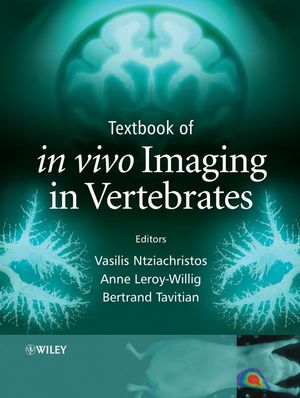Textbook of in vivo Imaging in VertebratesISBN: 978-0-470-01528-5
Hardcover
388 pages
October 2007
 |
||||||
Well illustrated, largely in colour, the book reviews the most common and technologically advanced methods for vertebrate imaging, presented in a clear, comprehensive format. The basic principles are described, followed by several examples of the use of imaging in the study of living multicellular organisms, concentrating on small animal models of human diseases. The book illustrates:
- The types of information that can be obtained with modern in vivo imaging;
- The substitution of imaging methods for more destructive histological techniques;
- The advantages conferred by in vivo imaging in building a more accurate picture of the response of tissues to stimuli over time while significantly reducing the number of animals required for such studies.
Part 1 describes current techniques in in vivo imaging, providing specialists and laboratory scientists from all disciplines with clear and helpful information regarding the tools available for their specific research field. Part 2 looks in more detail at imaging organ development and function, covering the brain, heart, lung and others. Part 3 describes the use of imaging to monitor various new types of therapy, following the reaction in an individual organism over time, e.g. after gene or cell therapy.
Most chapters are written by teams of physicists and biologists, giving a balanced coherent description of each technique and its potential applications.



